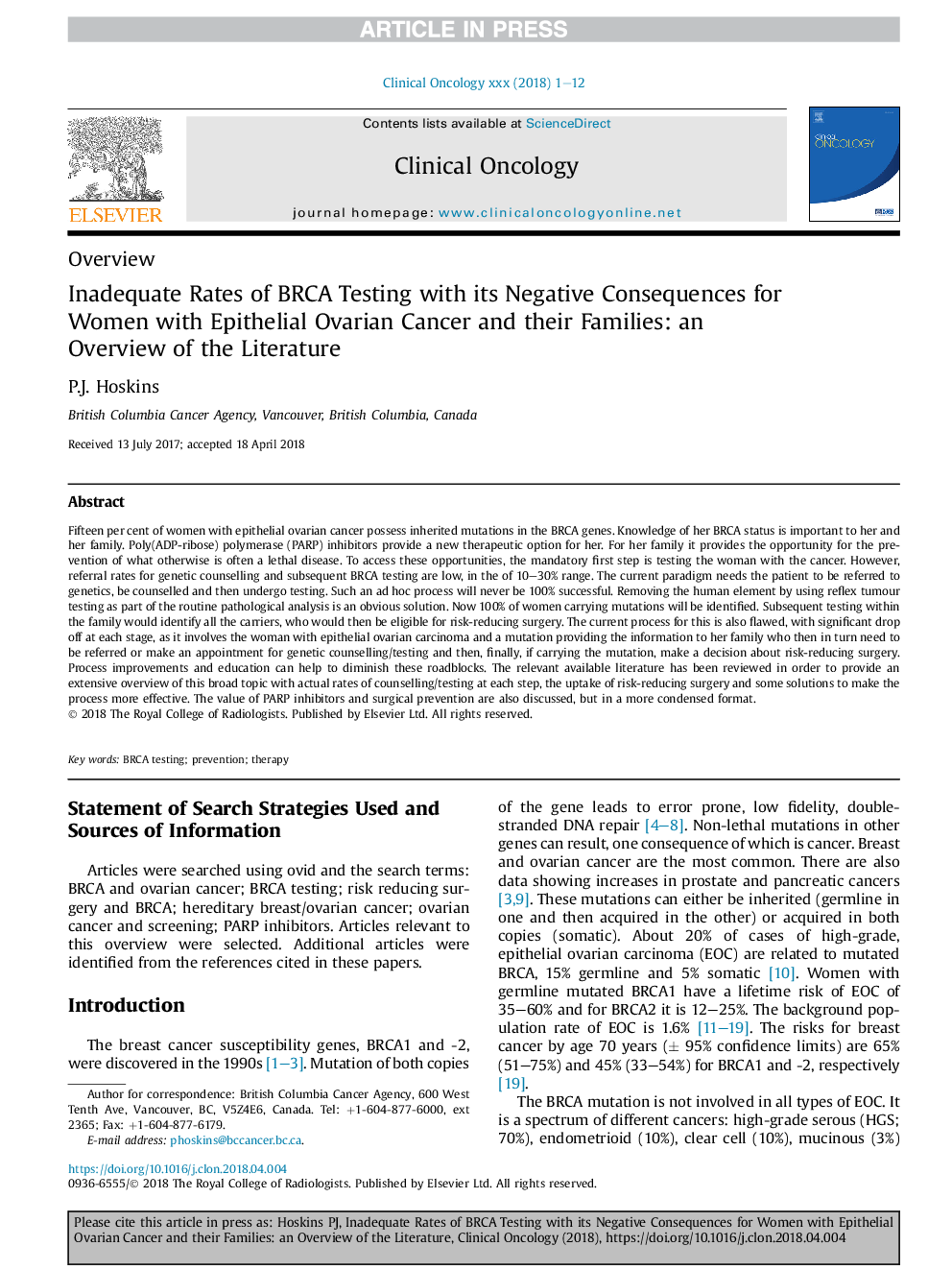| Article ID | Journal | Published Year | Pages | File Type |
|---|---|---|---|---|
| 8786007 | Clinical Oncology | 2018 | 12 Pages |
Abstract
Fifteen per cent of women with epithelial ovarian cancer possess inherited mutations in the BRCA genes. Knowledge of her BRCA status is important to her and her family. Poly(ADP-ribose) polymerase (PARP) inhibitors provide a new therapeutic option for her. For her family it provides the opportunity for the prevention of what otherwise is often a lethal disease. To access these opportunities, the mandatory first step is testing the woman with the cancer. However, referral rates for genetic counselling and subsequent BRCA testing are low, in the of 10-30% range. The current paradigm needs the patient to be referred to genetics, be counselled and then undergo testing. Such an ad hoc process will never be 100% successful. Removing the human element by using reflex tumour testing as part of the routine pathological analysis is an obvious solution. Now 100% of women carrying mutations will be identified. Subsequent testing within the family would identify all the carriers, who would then be eligible for risk-reducing surgery. The current process for this is also flawed, with significant drop off at each stage, as it involves the woman with epithelial ovarian carcinoma and a mutation providing the information to her family who then in turn need to be referred or make an appointment for genetic counselling/testing and then, finally, if carrying the mutation, make a decision about risk-reducing surgery. Process improvements and education can help to diminish these roadblocks. The relevant available literature has been reviewed in order to provide an extensive overview of this broad topic with actual rates of counselling/testing at each step, the uptake of risk-reducing surgery and some solutions to make the process more effective. The value of PARP inhibitors and surgical prevention are also discussed, but in a more condensed format.
Keywords
Related Topics
Health Sciences
Medicine and Dentistry
Oncology
Authors
P.J. Hoskins,
